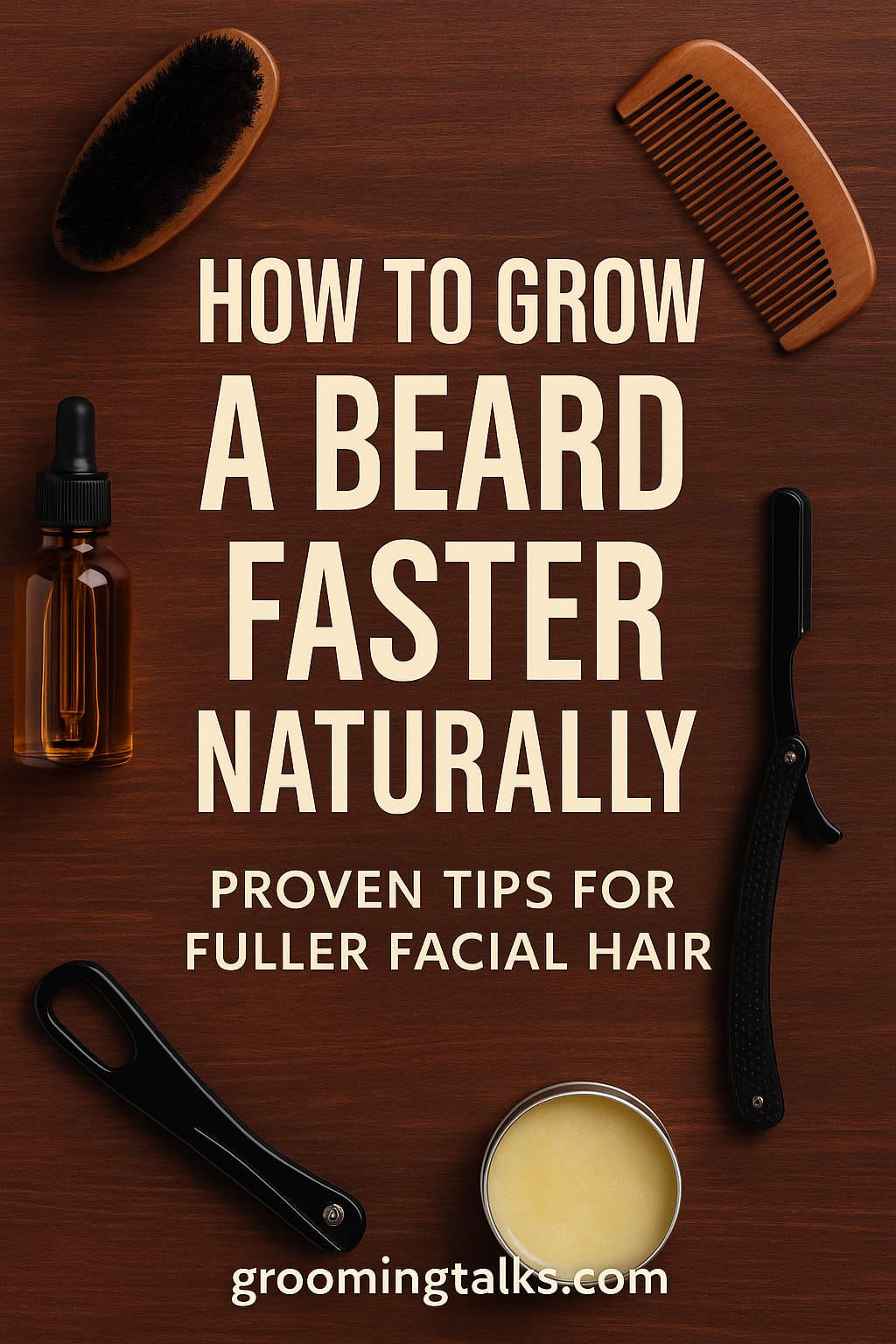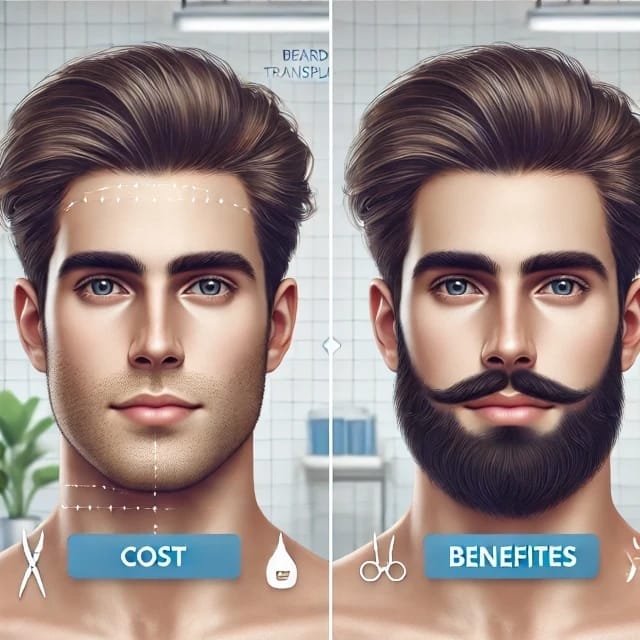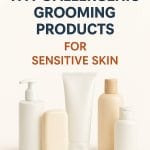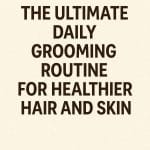Let’s face it—growing a beard isn’t as simple as just “not shaving.” If you’ve ever tried to grow a beard and found yourself staring in the mirror at patchy growth, slow progress, or irritation, you’re definitely not alone. For many men, the path to a full, thick beard is more complicated than it seems.
The good news? You can take control of your beard growth journey. While you can’t change your genetics, you can support your body, skin, and hair to grow a healthier beard—often faster than you think.
In this guide, we’ll break down how beard growth actually works, what influences it, and—most importantly—what you can do to speed things up naturally and effectively.
Why Beard Growth Feels So Slow
When you first decide to grow a beard, patience is probably the biggest challenge. You’ll likely go through an awkward phase: stubble, patches, itchiness, and uneven growth. It can be discouraging, especially when it feels like other guys just wake up with full beards.
But here’s what’s really happening behind the scenes.
Facial hair growth is driven by two key hormones: testosterone and DHT (dihydrotestosterone). Your hair follicles respond to these hormones, which stimulate growth during puberty and continue influencing your facial hair throughout adulthood.
That said, not all follicles are created equal. Some men’s follicles are more sensitive to these hormones, which results in faster or thicker growth. Others might have the hormones but lack the right receptor activity in the follicles.
So yes—genetics matter. But they don’t tell the whole story.
You can’t will a Viking beard overnight. But by supporting your body’s natural growth processes, optimizing your routine, and avoiding common mistakes, you can see noticeable improvements in your beard’s speed and density over time.
First Things First: Set Realistic Expectations
Before we get into what you can do, let’s get one thing out of the way: not every man can grow a full lumberjack-style beard. And that’s okay.
What you can do is maximize your own beard potential. That means taking care of your body, skin, and facial hair in a way that encourages the best growth you’re capable of.
Some men will need more time. And, some will grow patchy beards. Some won’t get much beyond a goatee. But with consistency and the right approach, most men can dramatically improve their beard game.
Common Beard Growth Myths (You Can Ignore)
Let’s bust a few popular myths that often mislead guys who are serious about growing a beard:
❌ Shaving makes your beard grow back thicker.
Nope. This is one of the oldest grooming myths around. Shaving simply cuts the hair at the surface—it doesn’t affect the follicle or growth rate.
❌ Beard oils grow hair.
Not quite. Beard oils help condition your beard and skin, which supports healthier hair, but they don’t stimulate growth like medications or hormonal triggers can.
❌ Everyone can grow a beard if they try hard enough.
We wish it were that simple. Some men have sparse follicles or hormone levels that limit growth. That doesn’t mean you can’t make the best of what you’ve got.
❌ Trimming helps it grow faster.
Trimming helps shape your beard, but it doesn’t influence how fast the hair grows. Still, trimming split ends can improve the look and feel of your beard as it grows.
Natural Ways to Encourage Faster Beard Growth
Alright, now let’s talk about what actually works. Here are science-backed, effective ways to help grow your beard faster and fuller—without gimmicks or miracle cures.
1. Fuel Your Beard from the Inside
Beard hair is made from a protein called keratin, so what you eat has a direct impact on how your beard grows.
If you’re not eating well, your beard probably isn’t growing well either.
Here are key nutrients your beard needs:
- Protein – Hair is made of it. Lean meats, eggs, legumes, and nuts are excellent sources.
- Biotin (Vitamin B7) – A vital vitamin for healthy hair growth. Found in eggs, almonds, salmon, and sweet potatoes.
- Zinc – Supports testosterone production and hair follicle strength. Found in red meat, seeds, and shellfish.
- Vitamin D – Helps stimulate dormant hair follicles. Your best source? Sunlight. Supplements can help too.
- Omega-3 Fatty Acids – These support skin and hair health. You can get them from fish, flaxseed, and walnuts.
- Iron – Prevents hair thinning. Eat more spinach, lentils, and red meat if you’re low.
No, you don’t need to obsess over every calorie. Just eat a varied, whole-food-based diet that includes plenty of vegetables, lean protein, healthy fats, and complex carbs.
2. Get Better Sleep (Seriously)
Your body does its repair and regeneration work while you’re asleep. This includes replenishing the cells responsible for hair growth.
If you’re not sleeping at least 7–8 hours a night, your body may not have the recovery time it needs to grow a healthy beard. Even one or two hours less can negatively affect testosterone and stress levels.
Good sleep = better beard.
3. Manage Stress Like a Boss
Chronic stress is a beard killer. Why?
Because stress increases cortisol, and high cortisol lowers testosterone levels. That’s the exact opposite of what you want if you’re trying to grow a thicker beard.
Here’s how to reduce stress effectively:
- Exercise regularly (even walking helps)
- Meditate or do deep breathing daily
- Avoid excessive caffeine and alcohol
- Get enough sleep
- Make time for hobbies, not just work
Even just 10 minutes of calm breathing or stretching a day can make a difference.
4. Exercise to Boost Testosterone
When you lift weights or do intense cardio, your body naturally boosts testosterone. That’s a major win for beard growth.
Focus on:
- Strength training (3–4 times a week)
- High-Intensity Interval Training (HIIT)
- Daily movement (walks, stretching, yoga, etc.)
And no—you don’t have to be a gym rat. Just make sure you’re moving and building strength regularly.
5. Take Care of Your Skin
A healthy beard starts with healthy skin. If your skin is dry, inflamed, or clogged, your beard won’t grow well.
Your skincare routine should be simple but consistent:
- Wash your face daily with a gentle cleanser
- Exfoliate 1–2 times a week to remove dead skin
- Moisturize to keep your skin hydrated
- Massage your face gently to stimulate blood flow
Beard growth is closely tied to blood circulation, so massaging your face while applying oil or moisturizer can help bring nutrients to your follicles.
Effective Beard Growth Tools and Products
Now that we’ve covered the basics, let’s dive into some tools and products that can actually speed up your beard growth when used responsibly.
1. Minoxidil (Yes, the Hair Regrowth Stuff)
Minoxidil (Rogaine) is a topical treatment originally developed for scalp hair loss, but many men have found success using it off-label on their faces.
It works by improving blood circulation to your follicles and shortening the resting phase of hair growth.
Tips for using Minoxidil for beards:
- Use the 5% liquid or foam version
- Apply once or twice daily to clean, dry skin
- Be consistent for at least 3–6 months
- Expect shedding early on—it’s normal
Caution: Minoxidil can cause dryness, irritation, or even unwanted hair growth on other areas if not applied carefully. Always wash your hands afterward and avoid contact with other parts of your body.
2. Beard Roller (Microneedling)
Microneedling involves rolling tiny needles over your skin to create micro-injuries that stimulate collagen production and improve product absorption.
Using a 0.25mm to 0.5mm derma roller on your beard area 1–2 times a week can help:
- Stimulate blood flow
- Reactivate dormant follicles
- Boost Minoxidil or oil absorption
Always sterilize your roller before and after use, and never use it on broken or irritated skin.
3. Beard Oils and Balms
While they won’t make hair grow faster, beard oils and balms help create the best environment for growth by moisturizing the skin, preventing itchiness, and keeping your beard soft and healthy.
Look for oils with ingredients like:
- Jojoba oil
- Argan oil
- Castor oil
- Vitamin E
Balms add styling control and often include shea butter or beeswax for extra moisture.
Apply after washing your face or showering to seal in hydration.
Dealing With Patchy Beards
Patchiness is one of the most frustrating parts of beard growth, especially during the first few weeks or months. Here’s how to manage it:
- Let it grow longer – Many patchy spots will fill in as the surrounding hair grows out.
- Brush your beard – Brushing helps stimulate growth and can redirect hair to cover thinner areas.
- Use shaping to your advantage – You can style your beard in ways that downplay patchy spots (like a goatee, chin strap, or short boxed beard).
- Be consistent with products – Minoxidil, beard rollers, and good skincare can gradually improve patchy growth.
And remember—what looks patchy to you might not even be noticeable to others.
Important Lifestyle Habits That Support Beard Growth
Here are a few daily habits that support long-term beard growth:
- Stay hydrated – Drink at least 2–3 liters of water per day. Dehydration leads to dry skin and brittle hair.
- Limit alcohol – Too much booze lowers testosterone and reduces nutrient absorption.
- Quit smoking – Smoking restricts blood flow to follicles and accelerates hair loss.
- Avoid over-washing – Washing your face too often strips away natural oils. Stick to once or twice a day.
- Don’t pick at your beard – Pulling or scratching damages follicles and slows growth.
Be Patient, Be Consistent, and Stick With It
This is the part most guys struggle with: time.
Growing a beard isn’t like flipping a switch. It’s more like planting a garden. You feed it, water it, nurture it—and give it time.
It usually takes 4–8 weeks of uninterrupted growth to start seeing your beard’s real potential. If you’re using something like Minoxidil, expect 3–6 months for noticeable changes.
Avoid trimming too early. Fight through the itch. Ignore the patchiness. Just give your beard the time and support it needs to thrive.
Final Thoughts
At the end of the day, growing a beard faster comes down to three key things:
- Creating a healthy foundation through diet, sleep, and skincare
- Using proven tools like Minoxidil and microneedling if you want to go the extra mile
- Being patient and consistent—even when progress is slow
You don’t need to have perfect genes to grow a respectable beard. You just need to understand how your body works and support it the right way.
So take care of your body, stay consistent, and trust the process. Your beard will thank you.
You might also like,
- Best Beard Care Products for Sensitive Skin – Complete Guide
- Top 18 Best Shampoos for Dry Hair 2025: Restore Moisture & Shine
- Beard Transplants: Costs, Benefits, and Everything You Need to Know






